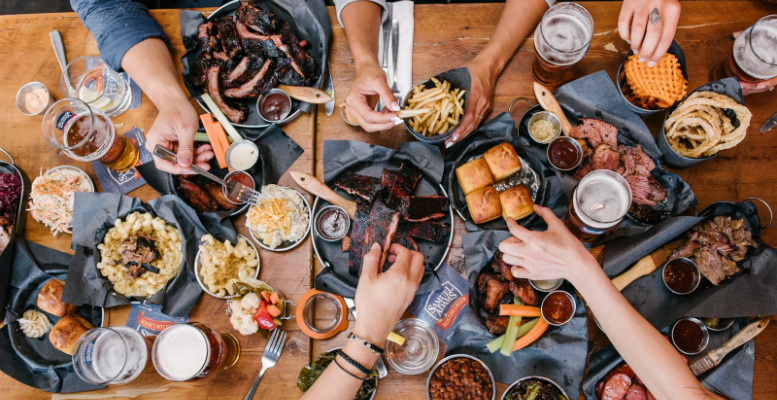
For years, the relationships between restaurateurs, menu selections and hungry patrons remained mostly unchanged, various exceptions always included. Enter social media, an online voice of fandom, frustration and customer-on-keyboard justice; food photos, on-site selfies and reviews, both positive and scathing.

Before the golden age of the Internet, consumers had to go in-house to find out what’s on the menu. These days, studies have found that a majority of these patrons won’t visit a restaurant until they’ve seen photographic menus, dining suggestions or recent reviews online. For some, if there’s no website or social media to refer to at all, it’s “onto the next one,” even if it started as a great idea.
With hungry people depending on their mobiles and their social networks to make their next great dining decision, there’s no time like the present for you to be revamping your digital media menu strategies. Here are a few dos and don’ts to get your dishes seen and licked right clean.
Do Let Customers Swipe Left
With Instagram rolling out its multi-photo slideshow feature — their equivalent of a photo album — this is just one more way to present your current and potential clientele with photos and/or videos of your menu options and specials.
Take some great photos of new and seasonal servings that’ll have your customers swiping left to see more. If you’re feeling advanced enough in your photographic abilities, Instagram Stories are a great addition to a business’ social marketing strategy. This add-on also allows consumers to swipe up, directly taking them to online booking, if pre-arranged by the account holder.
From the Tip Jar: Don’t forget to use geotagging for easy location finding. This also allows Instagram users to see what others have taken photos of at the same location, furthering their decision-making in where they’d like to go.
Do Pay Attention to Customer Postings

One thing to remember is that just because a particular dish or beverage is ordered most often does not always mean it’s the most liked. Just like how a film in the theatre can’t be gauged on how good it is by how much it raked in at the box office opening weekends; just because they saw it doesn’t mean they were entertained by it.
A great way of tracking fan favourites is pointing out to yourself and your staff what patrons are posting about on Facebook, Twitter or Instagram, both good and bad. If photos and comments are continually raving about a particular meal, it’s likely best to not cut it off your menu anytime soon.
From the Tip Jar: Consider the aesthetic appeal of an in-house order when populating digital data. Nobody wants to post unappealing photos of something they might have otherwise found quite appetizing unless they really have something important to say about it. Keep photogenic traits in mind when designing new menus as well. Life imitates art, art imitates life and, in the end, it’s free marketing if they make it online through multiple social postings.
Don’t Nix the Newsletter
Despite the common reliance on texting and digital direct messages, email alerts are still an important staple in any type of business, including foodservice, and your newsletters are no exception. Whether your menu changes every few weeks or just with the seasons, newsletters can serve as free, formal notices of updates, hours and any other specials your restaurant wants diners to know about.
From the Tip Jar: In various cases, you may want to send a blast about a certain piece two times or more. Some restaurants tend to send the first newsletter notice two to three weeks before the date of occurrence and then a shorter reminder version a few days prior.
Don’t Waste your Website Space
Anytime you refresh your business offline, always refresh your content online. With the majority of Internet browsing being via mobile, it’s best to make sure your website is accessible, Flash-free and smartphone-friendly. Check to see that it not only contains your menu options but also bright colourful visuals of the food and drink options consumers can come to expect when they come to your tables. Ensure valid contact information is easily viewable in case of inquiries or customer feedback.
From the Tip Jar: If your menu is posted on Internet locations other than your website, ensure you refresh those as well. Yelp, Open Table and similar foodservice outlets will not update automatically.
Final Thoughts
Once you’ve gone through the list, there are additional tasks you can take on to ensure prowess in online postings. Supplementary steps like goal-setting, competition monitoring, media mentorship and agency partnerships can make a world of difference in real life when guiding your restaurant through its digital or “second” life. Also, don’t be afraid to look to friends, influencers and even “frenemies” for inspiration — all’s fair in love and food.
